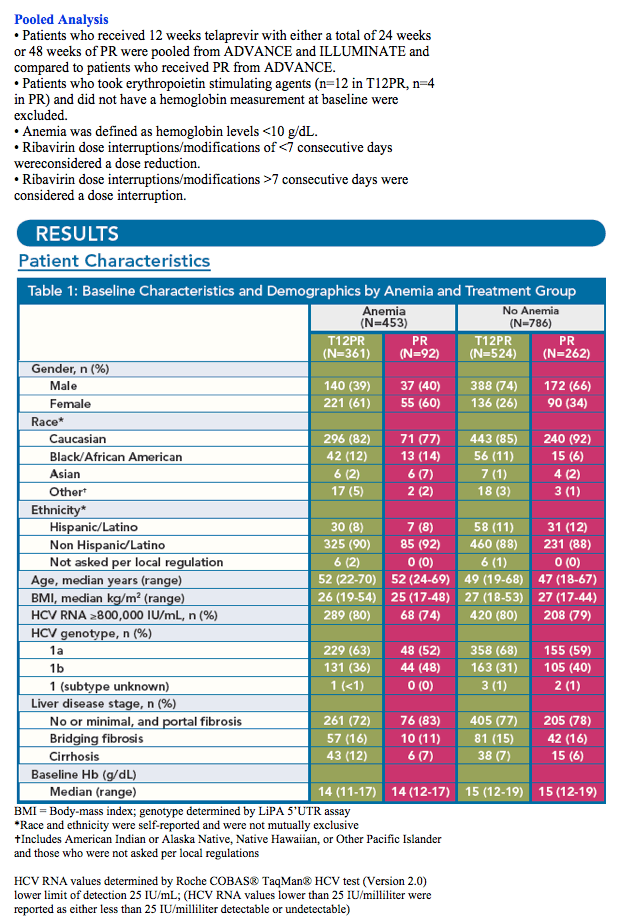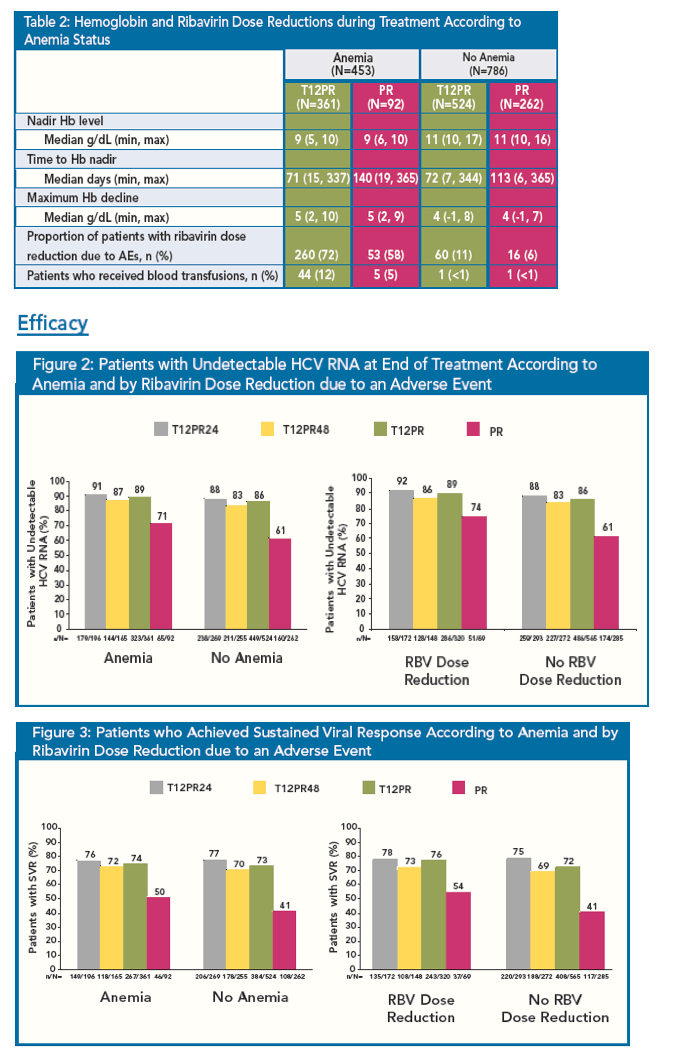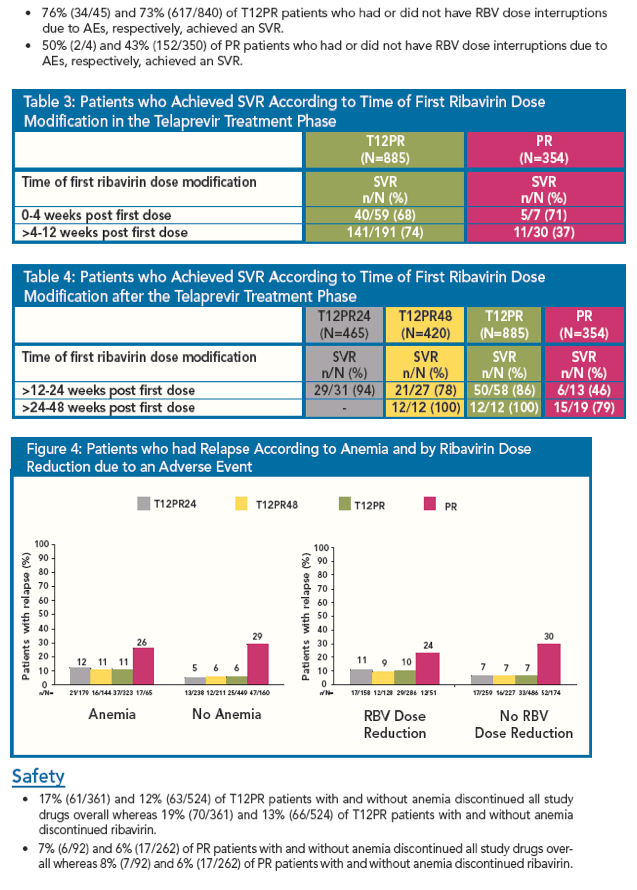 |
 |
 |
| |
Anemia had No Effect on Efficacy Outcomes in Treatment-naïve Patients Who Received Telaprevir-based Regimen in the ADVANCE and ILLUMINATE Phase 3 Studies
|
| |
| |
Reported by Jules Levin
EASL 2011 Berlin Germany March 30-April 3
MS Sulkowski1*, R Reddy2, NH Afdhal3, AM Di Bisceglie4, S Zeuzem5, F Poordad6, L Bengtsson7, CI Wright7, RS Kauffman7, N Adda7
1Johns Hopkins University School of Medicine, Baltimore, MD, 2University of Pennsylvania School of Medicine, Philadelphia, PA, 3Beth Israel Deaconess Medical Center, Boston, MA, 4Saint Louis University School of Medicine, Saint Louis, MO, USA, 5Johann Wolfgang Goethe University Medical Center, Frankfurt am Main, Germany, 6Cedars-Sinai Medical Center, Los Angeles, CA, 7Vertex Pharmaceuticals Incorporated, Cambridge, MA, USA.

BACKGROUND
· Telaprevir (TVR, T) is an orally bioavailable, specifically targeted antiviral drug for hepatitis C virus (HCV) that potently and selectively inhibits the HCV NS3·4A protease.1,2
· TVR in combination with peginterferon alfa-2a and ribavirin (PR) has been studied in treatment-naïve patients and improved sustained virologic response (SVR) rates, compared with PR alone.3,4,5
· ADVANCE was a randomized, placebo-controlled, Phase 3 clinical trial that evaluated efficacy and safety of TVR in combination with PR in chronic HCV genotype 1-infected treatment-naïve patients.5
· ILLUMINATE was an open-label, randomized, non-inferiority Phase 3 clinical trial that evaluated efficacy and safety of 24 weeks of TVR-based treatment versus 48 weeks in chronic HCV genotype 1-infected treatment-naïve patients who achieved extended rapid virologic response (eRVR, undetectable HCV RNA at weeks 4 and 12).6
· In this retrospective pooled analysis, we investigated efficacy outcomes based on anemia and ribavirin dose reductions.




References
1. Lin K, et al. Antimicrob Agents Chemother 2004;40:4784-4792.
2. Perni RB, et al. Antimicrob Agents Chemother 2006;50:899-909.
3. McHutchison JG, et al. N Engl J Med 2009;360:1827-1838. Erratum [N Engl J Med 2009; 361:1516]
4. Hézode C, et al. N Engl J Med 2009;360:1839-1850.
5. Jacobson IM et al. Hepatol, 2010, 52(4): Suppl 427A. Abstract #211
6. Sherman KE et al. Hepatol, 2010, 52(4): Suppl 401A. Abstract #LB2
|
| |
|
 |
 |
|
|